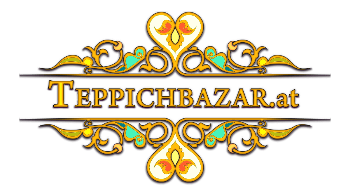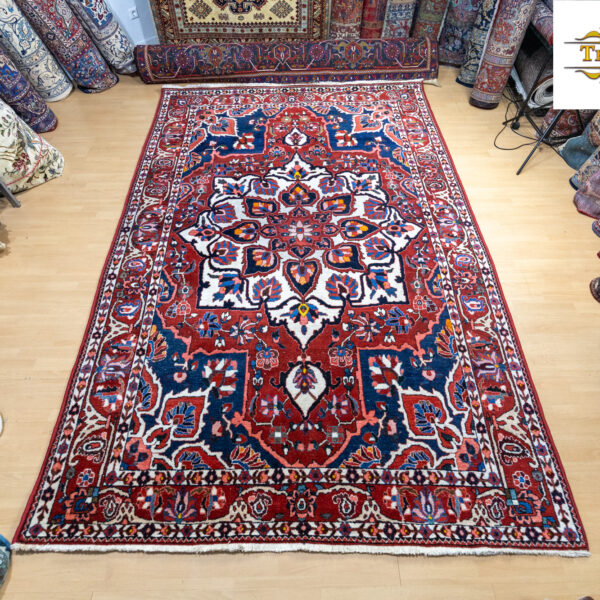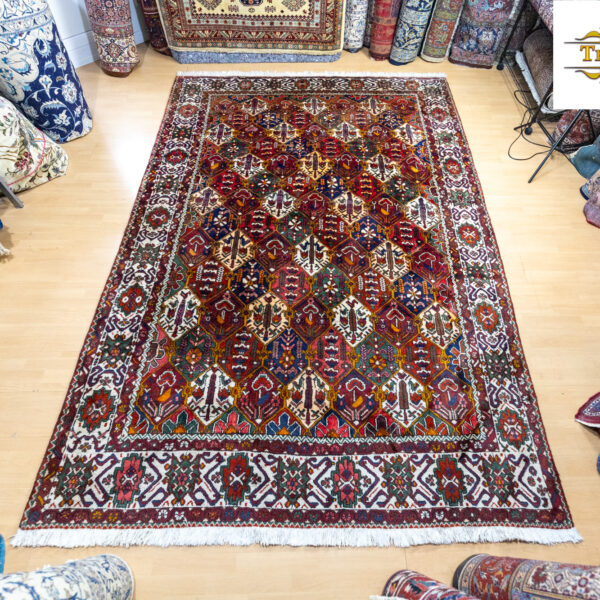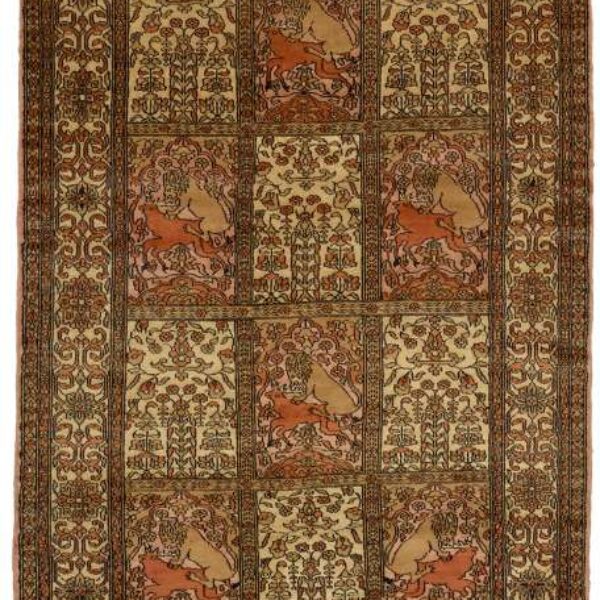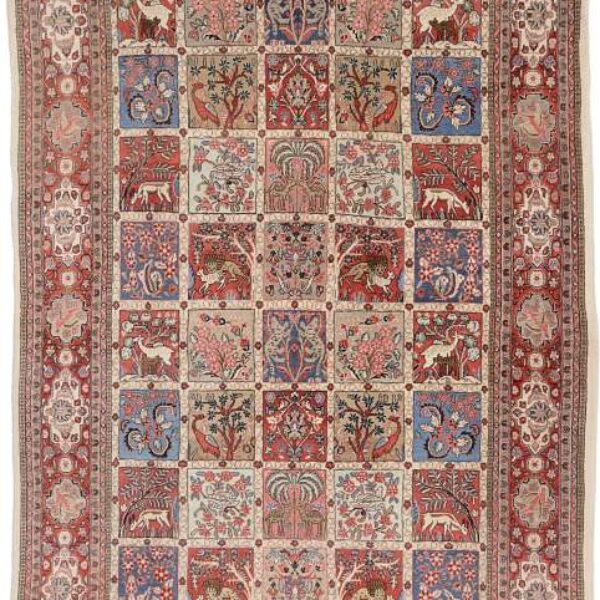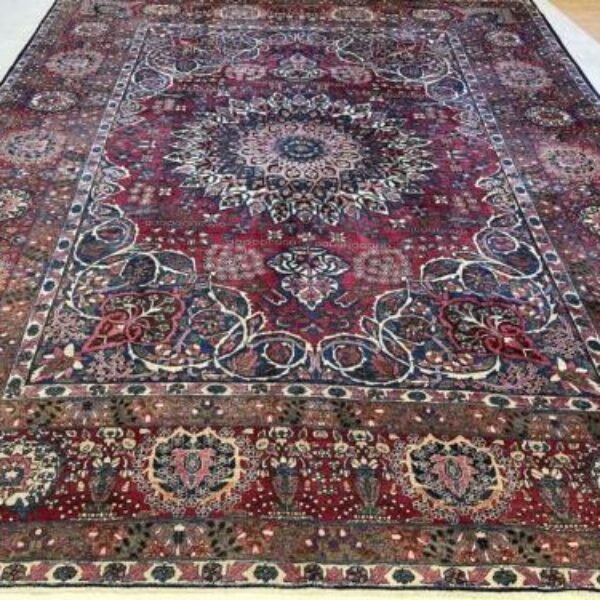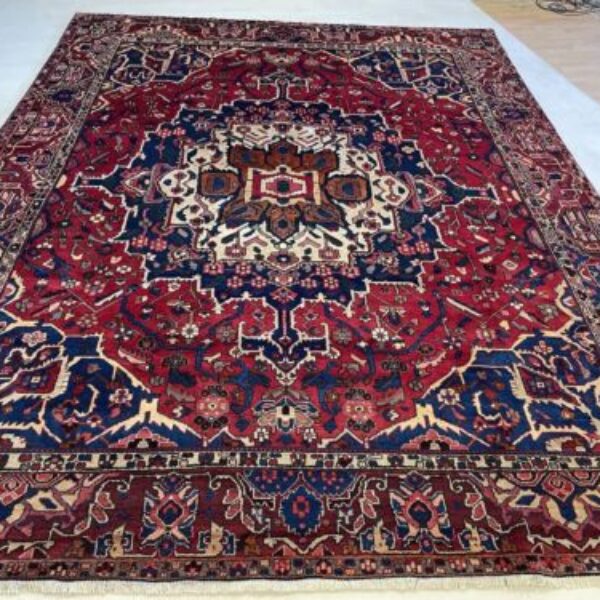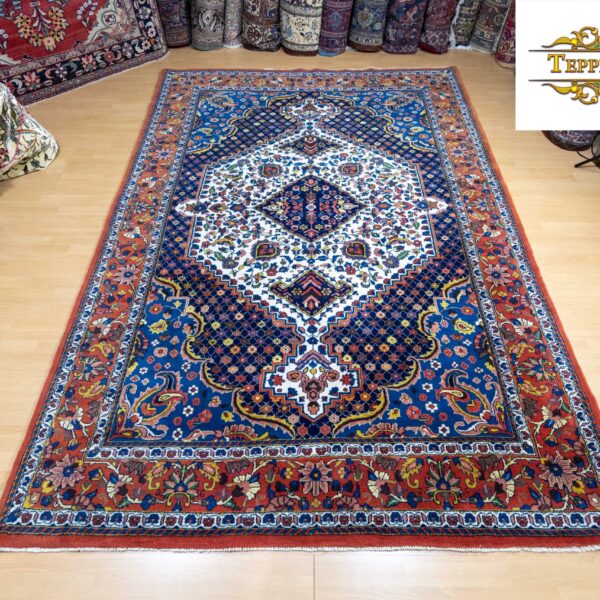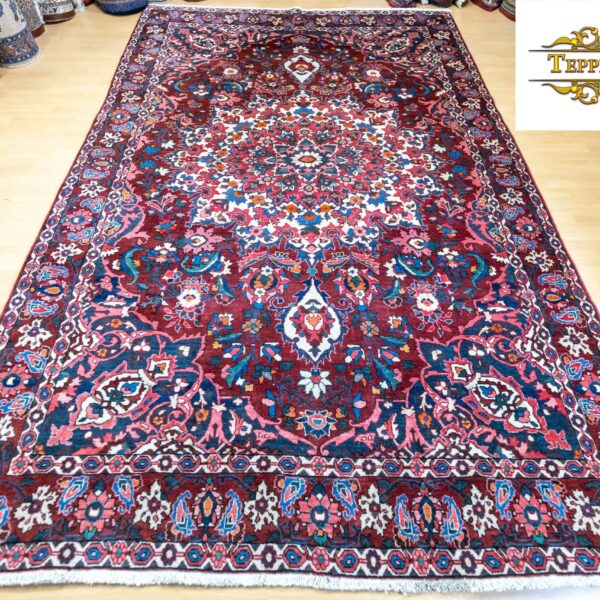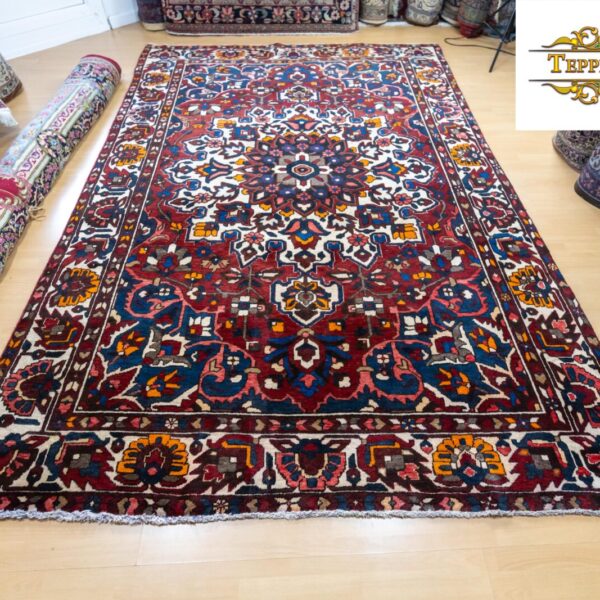Bakhtiar carpets
Persian carpets Bakhtiar (Bakhtiar)
Bakhtiar rugs are made from strong and durable wool. Named after the Bakhtiari nomads who lived in the Sagros Mountains near the city of Isfahan, this rug is the strongest of all Persian rugs. They are tied with thick wool to reduce wear and tear. Although it is not as fine and soft as the cork wool of other Persian carpets, it has the decisive advantage of being able to withstand daily wear and tear.
Bakhtia rugs are often made with patterns reminiscent of gardens. The so-called Chesty pattern is characterized by designs with motifs of plants and animals from nature. Inspired by a typical Persian garden. Sometimes Bakhtiari rugs are found with designs reminiscent of those from the nearby Isfahan carpet-making area.
Structure
Bakhtiari rugs are based on a cotton base (warp) with a weft of wool, usually sourced from the producing tribe's herds. This is how unique carpets are created, which differ according to the properties of the wool of the individual tribes. The wool can range from matte to extremely shiny, and the resulting pile is cut from medium to high. The best carpets with the highest knot density are often called Bibiaffs.[6] [a] Prices vary widely and rugs with the highest knot density are usually the most expensive, but price is also influenced by things like the pattern and dyes used. Chapel Shotur and Saman's plays are rated slightly below Bibiaff's productions, but are still rated good to excellent. Heavily woven and of inferior quality, hori rugs are generally largely affordable.
Sizes range from narrow entrance mats to large room designs up to 4m x 5m thick. Larger mats tend to be very rare and difficult to find. Likewise, older rugs, which are often coveted by collectors, can be extremely expensive.
Models
The patterns are mostly inspired by flowers or the garden. An established garden pattern, Khesti is perhaps the most well-known carpet design. The mat is divided into individual squares in which animals and plants act as symbols. Another influential design features a field decorated with latticework and floral ornamentation.
Colors
The use of colors varies according to the style of certain tribes. They typically include shades of white, red, brown, green, and yellow. The blue doesn't seem to be there. [citation needed] Natural dyes produce color variations that are particularly noticeable in older Bibibaffs.
